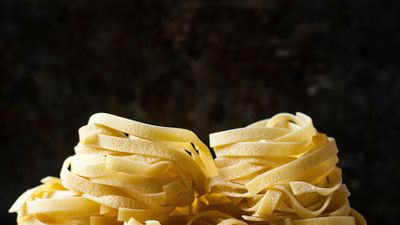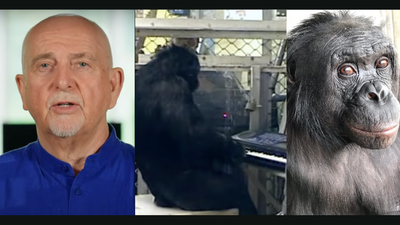In a world where organic “nitrite-free” meats are anything but, think twice before you slap some meat on the grill this weekend.
Nitrogen compounds are the basis of chemical fertilizers. They’re responsible for the giant dead zone in the Gulf of Mexico. Terry Nichols, the Michigan organic farmer, used ammonium nitrates to bomb Oklahoma City. Nitrate salts make the color that appears in firework displays. Sodium nitrate (NO3) are also added to dry-cured meats, hot dogs, and bacon. Added nitrate does nothing until beneficial bacteria slowly breaks it down into nitrite (NO2), which prevents further bacterial growth. Nitrites also form nitric oxide (NO), which helps stabilize the color of meats. And a lot of healthy people think that these nitrates and their chemical cousins, nitrites, cause cancer—and are willing to pay a premium to do without.
At least, they’re willing to pay for the illusion of “nitrate-free.” So when you pick up a few links of organic hot dogs or a pound of natural, uncured bacon for the Labor Day festivities, chances are the meat label will emphasize “no nitrates or nitrites.” But all that means is that no nitrate salts have been added. The idea that there are no nitrates at all is simply not true.
To replace the pure chemical nitrites of old, many organic meat producers have been substituting celery juice or a powdered extract. Celery is one of many leafy green vegetables with naturally occurring nitrates—about 1,103 parts per million in the fresh plant—so these labeling claims (while technically correct) can seem misleading. It's just another instance of the organic food industry accidentally replicating what it set out to oppose. Earlier this year, Cook’s Illustrated tested different types of bacon and found that two brands of "nitrate-free" bacon had significantly more nitrites than their conventional counterpart. “If you want to avoid these compounds," they wrote, "you’ll have to avoid bacon—and any other processed meats containing celery juice—altogether."
It’s all part of lasting legacy of the nitrite scare, which came to a head in 1978 when Paul Newberne, an MIT researcher began poring over thousands of slides documenting the effects of nitrite-rich diets in rats. According to The Washington Post (in a excellent piece called "The Day Bacon Was Declared Poison" that isn’t online), Newberne didn’t find much initially, but after carefully reviewing the data, he dropped his bombshell: Nitrites cause cancer. The Food and Drug Administration’s proposed a ban. The ban failed.The Nation said the ban's failure represented a "new era in which science abdicates its primary responsibility to protect the health of the public in favor of deregulation." And from then on, meat producers went on processing meats in much the same way they have for 3,000 years.
Salting and smoking of meat is a millennia-old technique and traditionally served one purpose: saving meat for later. At some point around the 1500s, Michael Ruhlman and Brian Polcyn write in Charcuterie, salt with a naturally occurring nitrate impurity was introduced. The use of nitrite and nitrate has decreased since the advent of refrigeration and since its reputation was scrutinized in the 1970s, when the allowable amount of chemical nitrite in meat dropped to about 120 ppm.
Sure, nitrite is used primarily with fatty, salty foods, and there might be compelling nutritional reasons for passing up extravagant amounts of sopressatas and coppas every day. But what makes nitrite different from other food additives—whether that’s melamine, olestra, or sassafras—is that its history is not accompanied by an epidemiological trail of health problems. And no one is asking vegetarians to stop consuming their nitrate-heavy celery, despite the fact that the bacterial, acidic environments in your mouth and stomach readily convert those nitrates to nitrites just like in cured meat.
Tom Mylan, a butcher at The Meat Hook in Brooklyn, told me he’s an unapologetic user of nitrites (which are also known as pink salts). "The real issue is the amount used. If people actually understood how little pink salt is required to prevent negative pathogens when you use clean, quality meat, I think that they would stop freaking out about seeing nitrates on a label. Industrial products use far more nitrite or nitrate than would normally be necessary in an effort to make up for the fact that the meat they use is sketchy at best."
It turns out that in making charcuterie, with all its complex chemistry, something as sinister sounding as nitrites can be an important part of the preindustrial food revival. "That’s not what so important to me. It’s more about what kind of meat in the product, where it comes from, how it’s treated," says Ryan Farr, of 4505 Meats in San Francisco. "You really can’t get around adding nitrates sometimes." For better or worse, nitrates are part of the modern meat industry—for both large and small-scale producers.













